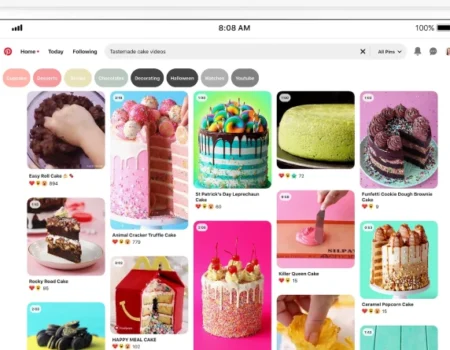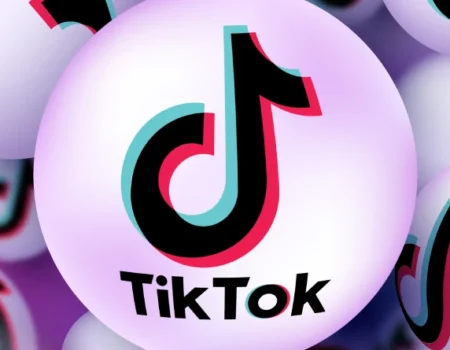Understanding Calls to Action & Their Importance in Marketing
A well-crafted call-to-action (CTA) is the gateway to higher engagement, increased conversions, and ultimately, business success. Whether urging users to sign up for a newsletter, encouraging them to share your content on social media, or prompting an immediate purchase, CTAs play a pivotal role in digital marketing strategies. In an era where social media marketing drives brand awareness, effective CTAs guide users through the decision-making process and ensure a seamless user journey.
This blog explores the essential role of CTAs, the various types available, and the Call-To-Action Tactics businesses should implement to maximize impact. We will also discuss conversion rate optimization techniques, A/B testing, and keyword analysis to help refine CTA strategies.
What Are Calls to Action and Why Are They Important?
A call-to-action is a directive encouraging users to take a specific action. This could be clicking a button, filling out a form, or purchasing a product. More than just text, CTAs are designed to persuade and guide users toward a desired action, forming the backbone of a marketing funnel.
CTAs are essential for:
- Increasing conversions by guiding users through the buyer’s journey.
- Boosting engagement by prompting users to interact with content.
- Improving lead generation through incentives like free resources or trials.
For instance, an e-commerce store might use CTAs like “Buy Now” or “Get 10% Off,” while a blog might use “Sign up for a newsletter” to grow its subscriber base.
Types of Calls to Action
Understanding different types of CTAs ensures the right strategy is employed for each audience segment.
- Direct CTAs: These focus on immediate action, such as “Buy Now,” “Download Free Guide,” or “Claim Your Discount.”
- Soft CTAs: These subtly encourage engagement without direct sales pressure, such as “Learn More” or “Discover the Benefits.”
- Multimedia CTAs: Using images, videos, or banners to capture attention more effectively.
- Breadcrumbs: These navigational elements help users understand their journey on a website while subtly guiding them toward key actions.
Benefits of Effective Calls to Action
When optimized, CTAs can significantly enhance the effectiveness of digital campaigns.
- Higher conversion rates: Strategic conversion rate optimization ensures CTAs align with user intent.
- Enhanced user experience: Well-placed CTAs simplify the navigation process, preventing confusion.
- Increased engagement: Encouraging users to share your content on social media expands your reach.
Best Practices & Strategies for High-Converting CTAs
A well-crafted Call to Action (CTA) can be the difference between user engagement and lost opportunities. Here are essential strategies to optimize CTAs for higher conversions.
- Use Strong Action Verbs
CTAs should be direct and compelling. Verbs like “Get,” “Try,” “Join,” and “Start” encourage users to take immediate action. Compare “Get Started Today” with a vague “Click Here”—the former is more engaging and actionable. - Sell the Trial
Offering a free trial minimizes hesitation and builds trust. CTAs like “Start Your Free Trial” reassure users they can explore without commitment, making it easier for them to take the first step. - Write a Benefit-Oriented CTA
Instead of a generic “Subscribe”, highlight the value: “Sign up for a newsletter and get exclusive industry insights.” Clearly communicating benefits increases sign-ups and engagement. - Showcase Instant Value
Creating urgency drives conversions. Phrases like “Limited Time Offer” or “Only a Few Left!” trigger FOMO (Fear of Missing Out), compelling users to act quickly. - Evoke Curiosity and Emotion
Emotionally driven CTAs resonate better. Instead of “Learn More,” try “Transform Your Business Today”—this inspires action by focusing on the end benefit. - Aggravate the Problem, Then Offer a Solution
CTAs can highlight pain points before presenting a fix. If users struggle with productivity, a more engaging CTA could be: “Tired of Wasting Time? Download Our Efficiency Guide.” This approach makes the solution more compelling. - Leverage FOMO (Fear of Missing Out)
Scarcity tactics, such as “Offer Ends Soon!” or “Last Chance to Save 20%”, push users to act before they lose an opportunity. - Use Clickbait (Ethically)
CTAs that pique curiosity—like “You Won’t Believe These Marketing Hacks”—can increase engagement. However, always ensure the content delivers on its promise. - Offer a Bonus
Enhancing perceived value boosts conversions. “Download Now & Get a Free Bonus” makes the offer more attractive, increasing clicks and sign-ups. - Optimize CTA Placement for User Experience
CTAs should be positioned above the fold, within content, and at the bottom of pages for maximum visibility. Breadcrumbs also help guide users seamlessly through the site. - Match CTAs to the Marketing Funnel
Different stages require different CTAs. “Learn More” is ideal for awareness, while “Buy Now” suits users ready to purchase. Aligning CTAs with the buyer’s journey ensures higher conversions. - A/B Test Your CTAs
Testing CTA copy, colors, and placement helps refine effectiveness. Using the 15 best A/B testing tools, businesses can identify what works best and optimize performance based on real-time data.
By strategically crafting and testing CTAs, businesses can enhance engagement, improve conversion rates, and ultimately drive growth.
Real-World Examples of Effective CTAs
Many brands have mastered the art of persuasive CTAs. For example:
- Dropbox: Uses “Try Dropbox Business Free” to highlight risk-free benefits.
- Netflix: “Join Free for a Month” eliminates hesitation.
- HubSpot: “Get Started – It’s Free” showcases accessibility.
Partner with our Digital Marketing Agency
Ask Engage Coders to create a comprehensive and inclusive digital marketing plan that takes your business to new heights.
Contact Us
FAQs About CTAs
What is a CTA?
A CTA, or call-to-action, is a prompt encouraging users to take a specific action, such as signing up, purchasing, or downloading content.
How do you write a strong CTA?
Use action-oriented language, highlight benefits, and create urgency while keeping CTAs concise.
What are some good examples of CTAs?
“Start Your Free Trial,” “Join Now & Get 10% Off,” and “Download Your Free Guide” are all effective CTAs.
Conclusion
A strategically placed and well-crafted call-to-action significantly impacts engagement, conversions, and revenue. Leveraging A/B testing, keyword analysis, and conversion rate optimization helps fine-tune CTAs for maximum performance. Whether encouraging users to share your content on social media or directing them to key landing pages through breadcrumbs, effective CTAs enhance user journeys.
Now it’s your turn—implement these Call-To-Action Tactics and watch your engagement soar!
Engage Coders boosts conversions with expert CTA strategies, A/B testing, and digital marketing solutions. Contact us today!








